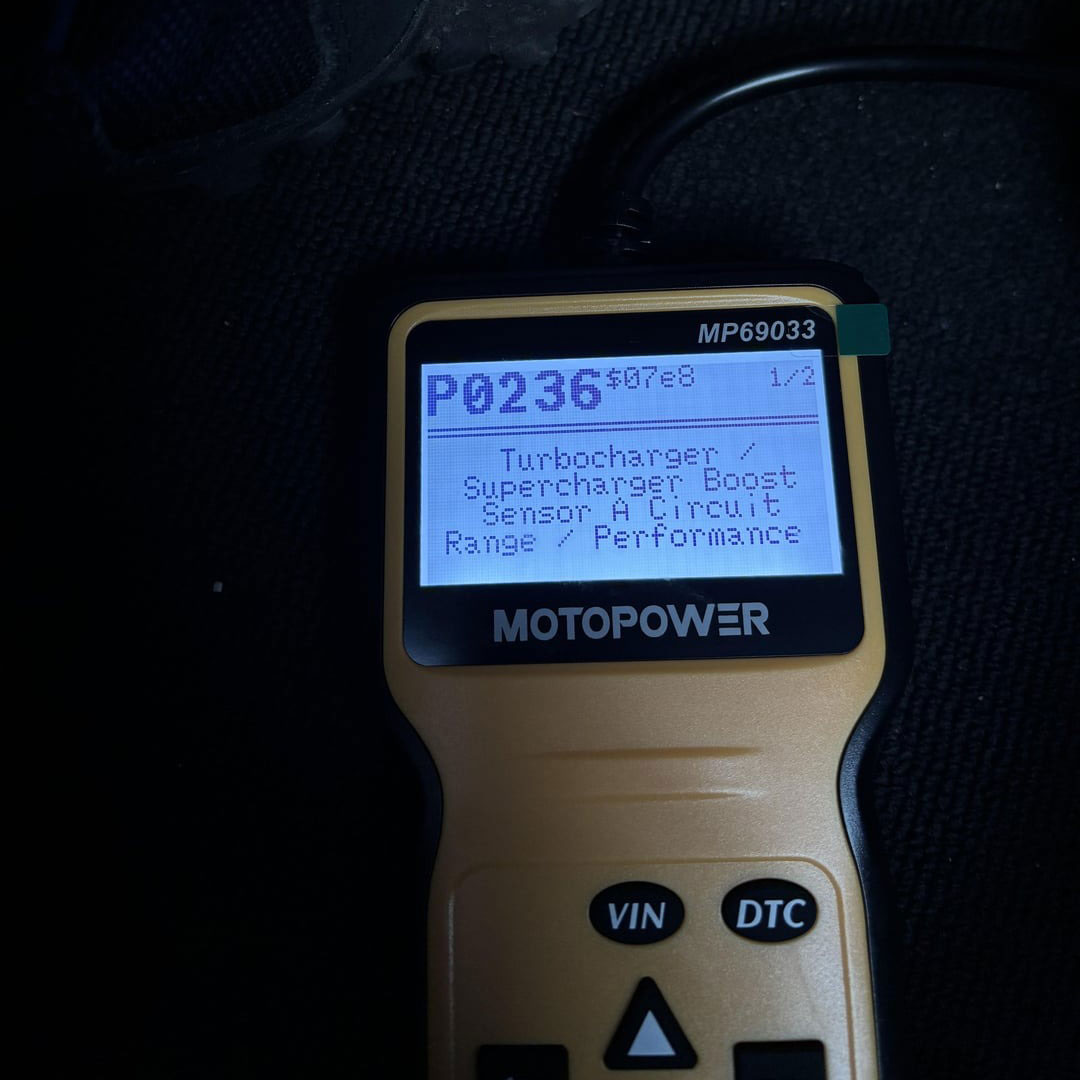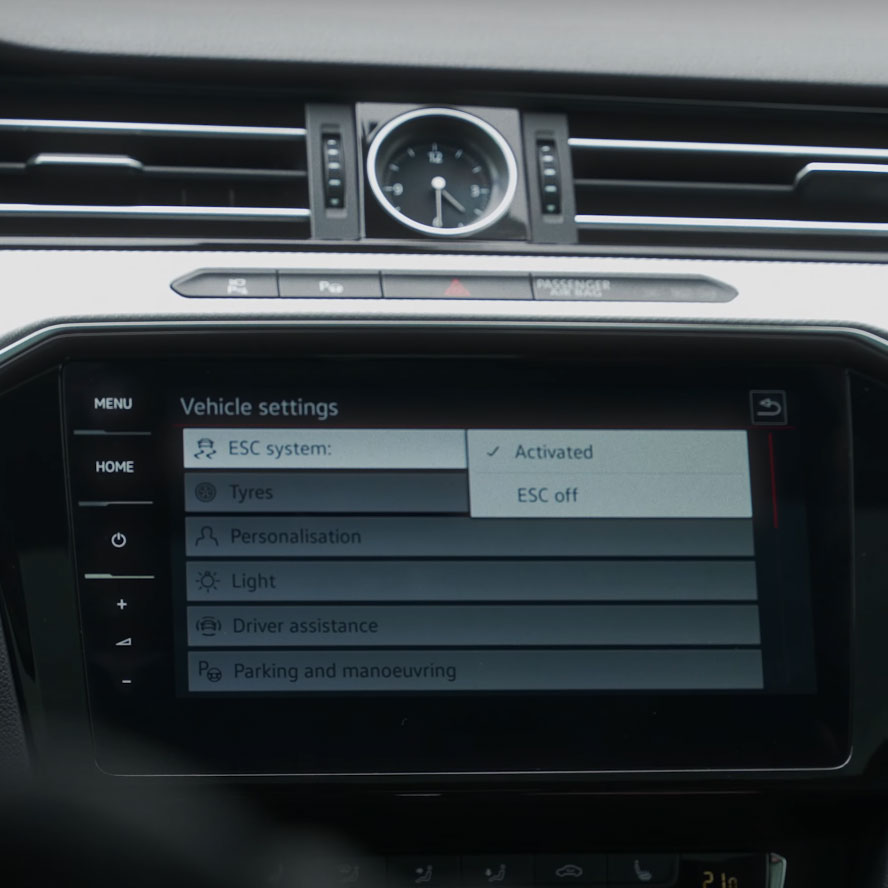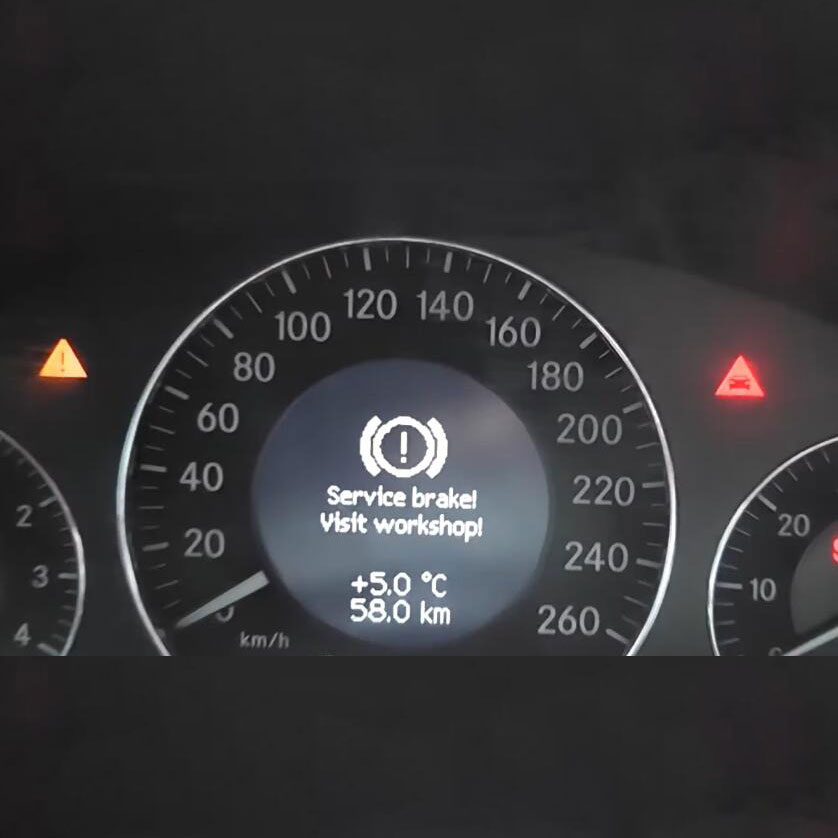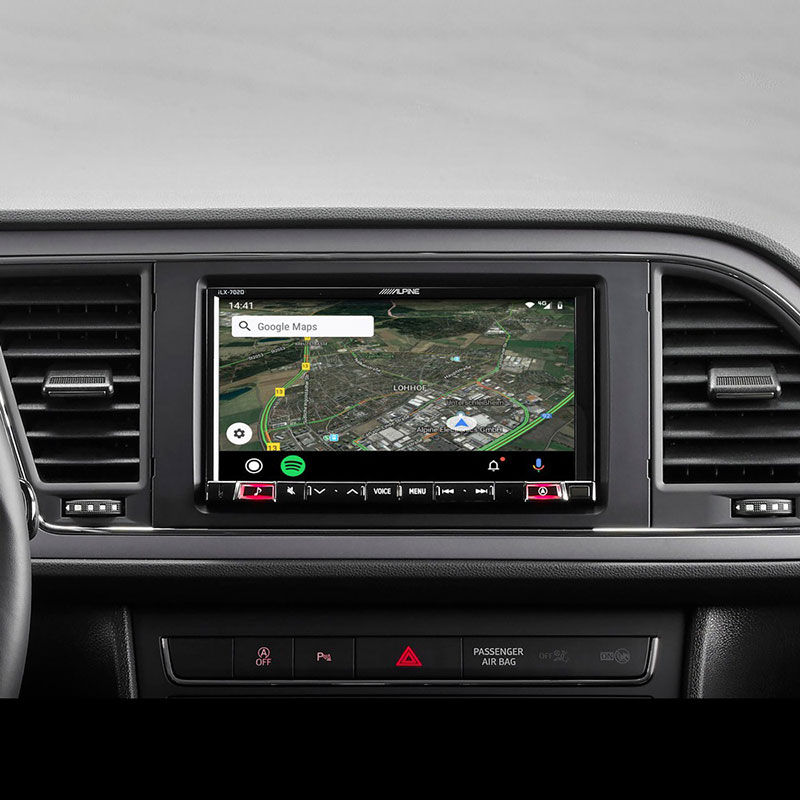
What Does Audi Code 008583 Indicate And How To Fix It?
Contents
- 1. What Does Audi Code 008583 Mean?
- 1.1. What are the symptoms of Audi code 008583?
- 1.2. What are the potential causes of Audi code 008583?
- 2. How to Diagnose Audi Code 008583
- 2.1. Preliminary Inspection
- 2.2. Scan for Additional Codes
- 2.3. Live Data Analysis
- 2.4. Vacuum Leak Testing
- 2.5. PCV Valve Inspection
- 2.6. Fuel Pressure Testing
- 2.7. Oxygen Sensor Testing
- 2.8. MAF Sensor Cleaning and Testing
- 3. How to Fix Audi Code 008583
- 3.1. Repair Vacuum Leaks
- 3.2. Replace Faulty PCV Valve
- 3.3. Clean or Replace MAF Sensor
- 3.4. Address Fuel System Problems
- 3.5. Replace Faulty Oxygen Sensor
- 3.6. Address EVAP System Leaks
- 3.7. Check and Correct Fuel Pressure
- 3.8. Software Updates
- 4. Common Mistakes to Avoid When Diagnosing and Repairing Audi Code 008583
- 5. AutoExplain.com Can Help
- 5.1. Remote Diagnostics
- 5.2. Step-by-Step Guidance
- 5.3. ECU Programming and Software Updates
- 5.4. Expert Support
- 6. How AutoExplain.com Stands Out
- 7. Understanding the Technical Aspects of Code 008583
- 7.1. Air-Fuel Mixture and Lambda
- 7.2. Fuel Trims in Detail
- 7.3. MAF Sensor Operation
- 7.4. Oxygen Sensor Function
- 8. Advanced Diagnostic Techniques
- 8.1. Fuel Injector Testing
- 8.2. Compression Testing
- 8.3. Exhaust Backpressure Testing
- 9. Preventive Maintenance
- 10. FAQ About Audi Code 008583
- 10.1. Can I drive my Audi with code 008583?
- 10.2. Is code 008583 serious?
- 10.3. How much does it cost to fix code 008583?
- 10.4. Can a bad gas cap cause code 008583?
- 10.5. Can a dirty air filter cause code 008583?
- 10.6. Will clearing the code make the problem go away?
- 10.7. How do I reset the ECU after fixing code 008583?
- 10.8. What tools do I need to diagnose code 008583?
- 10.9. How do I find a vacuum leak in my Audi?
- 10.10. What is the PCV valve, and what does it do?
Audi code 008583, also known as P2187, indicates a lean running condition at idle in bank 1, but AutoExplain.com can help you diagnose and fix it quickly. We provide remote diagnostic and repair services, ensuring your Audi runs smoothly with expert guidance.
1. What Does Audi Code 008583 Mean?
Audi code 008583, or P2187, signifies that the Engine Control Unit (ECU) has detected a lean condition in bank 1 during idle. A lean condition means there is too much air and not enough fuel in the air-fuel mixture. According to research from the Bosch Automotive Handbook, seventh edition, a lean condition can lead to reduced engine power and potential engine damage if not addressed promptly. This imbalance can stem from various issues, which we’ll explore further.
1.1. What are the symptoms of Audi code 008583?
The symptoms of Audi code 008583 can vary, but common signs include:
- Rough or unstable idle: The engine may struggle to maintain a steady RPM at idle.
- Stalling: The engine might stall, especially when coming to a stop.
- Poor acceleration: The vehicle may feel sluggish or hesitant when accelerating.
- Engine hesitation: A noticeable hesitation or stumble when pressing the accelerator.
- Check engine light: The check engine light will illuminate on the dashboard.
- Reduced fuel economy: You may notice a decrease in gas mileage.
1.2. What are the potential causes of Audi code 008583?
Several factors can trigger the 008583 code on an Audi. Here’s a breakdown of potential causes:
| Cause | Description |
|---|---|
| Vacuum Leaks | Leaks in the intake manifold, vacuum hoses, or PCV system allow unmetered air into the engine. |
| Faulty PCV Valve | A malfunctioning PCV valve can cause excessive air to enter the intake manifold, leading to a lean condition. |
| MAF Sensor Issues | A dirty or faulty Mass Air Flow (MAF) sensor can provide incorrect readings to the ECU, resulting in an improper air-fuel mixture. |
| Fuel System Problems | Issues with the fuel pump, fuel filter, or fuel injectors can restrict fuel delivery, causing a lean condition. |
| Oxygen Sensor Malfunction | An inaccurate oxygen (O2) sensor can provide incorrect feedback to the ECU, leading to improper fuel adjustments. |
| Intake Manifold Gasket Leak | A leak in the intake manifold gasket can allow unmetered air to enter the engine. |
| Exhaust Leaks | Exhaust leaks, especially near the O2 sensors, can introduce air into the exhaust stream, skewing O2 sensor readings. |
| EVAP System Leaks | Leaks in the Evaporative Emission Control (EVAP) system can cause unmetered air to enter the engine. |
| Clogged Fuel Injectors | Injectors clogged with carbon deposits can disrupt the spray pattern of the fuel entering the combustion chamber. |
| Incorrect Fuel Pressure | If the fuel pressure is either too high or too low, it can have a negative effect on the vehicle’s air-fuel mixture. Fuel pressure is a key determinant to an engines overall performance and health. |
2. How to Diagnose Audi Code 008583
Diagnosing Audi code 008583 requires a systematic approach. Here’s a step-by-step guide:
2.1. Preliminary Inspection
Start with a visual inspection. Check all vacuum lines, hoses, and the intake system for any visible cracks, breaks, or loose connections. Pay close attention to the PCV valve and its hoses. According to a study by the National Institute for Automotive Service Excellence (ASE), approximately 40% of lean condition issues are due to simple vacuum leaks.
2.2. Scan for Additional Codes
Use a diagnostic scanner like VCDS to check for any other related trouble codes. Codes such as P0171 (System Too Lean, Bank 1), P0174 (System Too Lean, Bank 2), P0507 (Idle Air Control System RPM Higher Than Expected), P2279 (Leak in Air Intake System), or misfire codes can provide valuable clues. The initial scan in the provided text shows 008825 – Leak in Air Intake System P2279 – 002 and 001287 – Idle Control System RPM P0507 – 001
2.3. Live Data Analysis
Use the scan tool to monitor live data from the MAF sensor, oxygen sensors, and fuel trims. Look for abnormal readings:
- MAF Sensor: Check the MAF sensor readings at idle and during acceleration. A faulty MAF sensor may show incorrect airflow readings. Normal MAF readings at idle for a 2.0L TFSI engine are typically around 2-4 g/s.
- Oxygen Sensors: Monitor the O2 sensor voltages. The upstream (pre-catalytic converter) sensor should fluctuate rapidly, while the downstream sensor should maintain a more stable voltage.
- Fuel Trims: Fuel trims indicate how much the ECU is adjusting the fuel mixture to compensate for a lean or rich condition. Positive fuel trim values suggest the ECU is adding fuel to correct a lean condition. Short-term fuel trim (STFT) and long-term fuel trim (LTFT) values greater than +10% indicate a significant lean condition.
2.4. Vacuum Leak Testing
Perform a vacuum leak test using a smoke machine or carburetor cleaner. Spray small amounts of carb cleaner around the intake manifold, vacuum hoses, and PCV valve while the engine is running. Listen for changes in engine RPM, which can indicate a vacuum leak. A smoke machine is more effective for finding smaller leaks, as it introduces smoke into the intake system, making leaks easily visible.
2.5. PCV Valve Inspection
The PCV valve is a common culprit for lean conditions in Audis. Inspect the PCV valve for cracks, leaks, or a stuck diaphragm. To test the PCV valve, remove it and shake it. If it rattles freely, it is likely functioning correctly. If it is stuck or makes unusual noises, it should be replaced.
2.6. Fuel Pressure Testing
Check the fuel pressure using a fuel pressure gauge. Consult your vehicle’s repair manual for the correct fuel pressure specifications. Low fuel pressure can indicate a failing fuel pump or a clogged fuel filter.
2.7. Oxygen Sensor Testing
Test the oxygen sensors using a multimeter. Check for proper voltage and response time. A faulty oxygen sensor can provide incorrect feedback to the ECU, leading to a lean condition.
2.8. MAF Sensor Cleaning and Testing
Clean the MAF sensor using a MAF sensor cleaner. Be careful not to damage the sensor’s delicate wires. After cleaning, retest the sensor using live data to ensure it is providing accurate readings. If cleaning doesn’t resolve the issue, the MAF sensor may need to be replaced.
3. How to Fix Audi Code 008583
Once you have identified the cause of the 008583 code, you can proceed with the necessary repairs. Here are some common solutions:
3.1. Repair Vacuum Leaks
Replace any cracked, broken, or loose vacuum lines and hoses. Ensure all connections are secure and properly sealed. If the intake manifold gasket is leaking, replace it.
3.2. Replace Faulty PCV Valve
If the PCV valve is malfunctioning, replace it with a new one. Use an OEM or high-quality aftermarket PCV valve to ensure proper function.
3.3. Clean or Replace MAF Sensor
If the MAF sensor is dirty, clean it with MAF sensor cleaner. If cleaning doesn’t resolve the issue, replace the MAF sensor.
3.4. Address Fuel System Problems
If the fuel filter is clogged, replace it. If the fuel pump is failing, replace it with a new one. Consider having the fuel injectors professionally cleaned or replaced if they are clogged.
3.5. Replace Faulty Oxygen Sensor
If an oxygen sensor is faulty, replace it with a new one. Use an OEM or high-quality aftermarket oxygen sensor to ensure proper function.
3.6. Address EVAP System Leaks
Inspect the EVAP system for leaks and repair any damaged components. This may include replacing the gas cap, EVAP hoses, or the EVAP canister.
3.7. Check and Correct Fuel Pressure
If the fuel pressure is incorrect, diagnose and repair the underlying issue. This may involve replacing the fuel pressure regulator or the fuel pump.
3.8. Software Updates
In some cases, the 008583 code may be triggered by outdated engine management software. Check with your Audi dealer for any available software updates for your vehicle.
4. Common Mistakes to Avoid When Diagnosing and Repairing Audi Code 008583
- Not Performing a Thorough Visual Inspection: Always start with a visual inspection of all vacuum lines and hoses. Many times, the problem is a simple as a cracked or disconnected hose.
- Ignoring Other Trouble Codes: Pay attention to any other trouble codes that may be present. These codes can provide valuable clues as to the root cause of the problem.
- Failing to Test Components: Don’t just replace parts without testing them first. Use a multimeter, scan tool, and other diagnostic tools to verify that a component is actually faulty before replacing it.
- Using Low-Quality Parts: When replacing parts, use OEM or high-quality aftermarket parts. Low-quality parts may not function properly and can cause additional problems.
- Not Clearing the Code After Repair: After completing the repairs, clear the trouble code and monitor the vehicle to ensure the problem is resolved.
5. AutoExplain.com Can Help
Diagnosing and repairing complex issues like Audi code 008583 can be challenging. AutoExplain.com offers remote diagnostic and repair services to help you resolve these issues quickly and efficiently. Our experienced technicians can guide you through the diagnostic process, provide expert advice, and even perform remote programming and software updates.
5.1. Remote Diagnostics
Using advanced diagnostic tools, we can remotely access your vehicle’s ECU and perform comprehensive diagnostics. This allows us to identify the root cause of the problem and provide you with a detailed repair plan.
5.2. Step-by-Step Guidance
Our technicians will provide you with step-by-step guidance on how to perform the necessary repairs. We can also provide you with wiring diagrams, technical service bulletins, and other resources to help you complete the job successfully.
5.3. ECU Programming and Software Updates
In some cases, resolving the 008583 code may require ECU programming or software updates. AutoExplain.com offers remote programming services to ensure your vehicle’s ECU is up to date and functioning properly.
5.4. Expert Support
Our team of experienced technicians is available to provide expert support via WhatsApp, email, or other online platforms. We can answer your questions, troubleshoot problems, and provide you with the guidance you need to get your Audi back on the road.
6. How AutoExplain.com Stands Out
AutoExplain.com stands out from other automotive diagnostic services due to our comprehensive approach and commitment to customer satisfaction. Here are some key benefits of using our services:
- Expert Technicians: Our team consists of highly skilled and experienced technicians with extensive knowledge of Audi vehicles.
- Remote Convenience: We offer remote diagnostic and repair services, allowing you to get the help you need without having to take your vehicle to a shop.
- Cost-Effective Solutions: Our services are often more cost-effective than traditional repair shops, as we can diagnose and resolve issues remotely, saving you time and money.
- Comprehensive Support: We provide comprehensive support, including step-by-step guidance, wiring diagrams, and technical service bulletins.
- Fast Turnaround: We understand that you need your vehicle back on the road as soon as possible. That’s why we strive to provide fast and efficient service.
7. Understanding the Technical Aspects of Code 008583
To fully grasp the intricacies of code 008583, it’s crucial to delve into the technical aspects involved. This section will provide a deeper understanding of the systems and components at play, as well as the data parameters that technicians analyze during diagnosis.
7.1. Air-Fuel Mixture and Lambda
The air-fuel mixture is the ratio of air to fuel that the engine consumes for combustion. The ideal air-fuel ratio, known as the stoichiometric ratio, is 14.7:1 for gasoline engines. This means that for every 14.7 parts of air, there should be 1 part of fuel. Lambda (λ) is a measure of the air-fuel ratio relative to stoichiometry. A lambda value of 1 indicates a stoichiometric mixture, while values greater than 1 indicate a lean mixture, and values less than 1 indicate a rich mixture.
In the case of code 008583, the ECU has detected a lambda value significantly greater than 1 during idle, indicating a lean condition.
7.2. Fuel Trims in Detail
Fuel trims are adjustments made by the ECU to compensate for deviations from the ideal air-fuel ratio. There are two types of fuel trims: short-term fuel trim (STFT) and long-term fuel trim (LTFT).
- Short-Term Fuel Trim (STFT): STFT is a real-time adjustment made by the ECU based on the oxygen sensor readings. It reflects immediate changes in the air-fuel mixture.
- Long-Term Fuel Trim (LTFT): LTFT is a learned adjustment that the ECU stores over time. It compensates for more persistent deviations in the air-fuel mixture.
Positive fuel trim values indicate that the ECU is adding fuel to correct a lean condition, while negative values indicate that the ECU is reducing fuel to correct a rich condition. Fuel trim values greater than +10% or less than -10% indicate a significant deviation from the ideal air-fuel ratio and can trigger a trouble code.
7.3. MAF Sensor Operation
The Mass Air Flow (MAF) sensor measures the amount of air entering the engine. It uses a heated wire or film to measure the airflow. As air flows past the heated element, it cools the element down. The ECU measures the amount of current required to maintain the element at a constant temperature, which is proportional to the airflow.
A faulty MAF sensor can provide incorrect airflow readings to the ECU, leading to an improper air-fuel mixture. A dirty MAF sensor may underestimate the airflow, causing the ECU to add too little fuel and resulting in a lean condition.
7.4. Oxygen Sensor Function
Oxygen sensors (O2 sensors) measure the amount of oxygen in the exhaust gas. There are two types of O2 sensors: upstream sensors (located before the catalytic converter) and downstream sensors (located after the catalytic converter).
- Upstream Sensors: Upstream sensors provide real-time feedback to the ECU about the air-fuel mixture. The ECU uses this information to adjust the fuel injection and maintain the ideal air-fuel ratio.
- Downstream Sensors: Downstream sensors monitor the efficiency of the catalytic converter. They provide feedback to the ECU about the converter’s ability to reduce emissions.
A faulty oxygen sensor can provide incorrect feedback to the ECU, leading to improper fuel adjustments and potentially triggering a lean condition.
8. Advanced Diagnostic Techniques
In some cases, diagnosing Audi code 008583 may require more advanced diagnostic techniques. Here are some examples:
8.1. Fuel Injector Testing
If you suspect that the fuel injectors are clogged or malfunctioning, you can perform a fuel injector test. This involves measuring the resistance of the fuel injectors and checking their spray pattern. A clogged fuel injector may have a restricted or uneven spray pattern, which can lead to a lean condition.
8.2. Compression Testing
A compression test can help identify issues with the engine’s cylinders, such as worn piston rings or leaky valves. Low compression in one or more cylinders can lead to a lean condition.
8.3. Exhaust Backpressure Testing
An exhaust backpressure test can help identify restrictions in the exhaust system, such as a clogged catalytic converter. Excessive exhaust backpressure can lead to a lean condition.
9. Preventive Maintenance
Preventive maintenance can help prevent Audi code 008583 and other engine-related problems. Here are some preventive maintenance tips:
- Regularly Inspect Vacuum Lines and Hoses: Check all vacuum lines and hoses for cracks, breaks, and loose connections. Replace any damaged components.
- Clean the MAF Sensor: Clean the MAF sensor every 30,000 miles to ensure accurate airflow readings.
- Replace the Fuel Filter: Replace the fuel filter every 30,000 miles to ensure proper fuel delivery.
- Monitor Fuel Trims: Keep an eye on your vehicle’s fuel trims. If you notice consistently high positive fuel trim values, investigate the cause and address the issue promptly.
- Follow Recommended Service Intervals: Follow the manufacturer’s recommended service intervals for your vehicle. This includes regular oil changes, spark plug replacements, and other maintenance tasks.
10. FAQ About Audi Code 008583
10.1. Can I drive my Audi with code 008583?
Driving with code 008583 is not recommended. The lean condition can cause engine damage over time. It’s best to diagnose and repair the issue as soon as possible.
10.2. Is code 008583 serious?
Yes, code 008583 can be serious if left unaddressed. A prolonged lean condition can lead to engine overheating, misfires, and damage to the catalytic converter.
10.3. How much does it cost to fix code 008583?
The cost to fix code 008583 can vary depending on the cause of the problem and the cost of parts and labor. Simple repairs, such as replacing a vacuum hose, may cost less than $100. More complex repairs, such as replacing the fuel pump or oxygen sensor, can cost several hundred dollars or more.
10.4. Can a bad gas cap cause code 008583?
Yes, a loose or faulty gas cap can cause a vacuum leak in the EVAP system, which can lead to a lean condition and trigger code 008583.
10.5. Can a dirty air filter cause code 008583?
A severely clogged air filter can restrict airflow to the engine, which can lead to a rich condition, not a lean condition. However, it’s always a good idea to replace the air filter as part of your regular maintenance routine.
10.6. Will clearing the code make the problem go away?
Clearing the code may temporarily turn off the check engine light, but it will not fix the underlying problem. The code will likely return if the issue is not addressed.
10.7. How do I reset the ECU after fixing code 008583?
After fixing the problem, you can reset the ECU by disconnecting the negative battery cable for 15-20 minutes. This will clear any stored codes and reset the fuel trims. Alternatively, you can use a scan tool to clear the codes and reset the ECU.
10.8. What tools do I need to diagnose code 008583?
To diagnose code 008583, you will need a scan tool, a multimeter, a vacuum gauge, a fuel pressure gauge, and a smoke machine (optional).
10.9. How do I find a vacuum leak in my Audi?
You can find a vacuum leak by performing a visual inspection of all vacuum lines and hoses. You can also use a smoke machine or carburetor cleaner to pinpoint the location of the leak.
10.10. What is the PCV valve, and what does it do?
The PCV (Positive Crankcase Ventilation) valve is a one-way valve that allows gases from the engine’s crankcase to be drawn into the intake manifold and burned in the engine. This helps to reduce emissions and prevent pressure buildup in the crankcase. A faulty PCV valve can cause a vacuum leak, which can lead to a lean condition and trigger code 008583.
By understanding the technical aspects of code 008583 and following the diagnostic and repair procedures outlined in this guide, you can effectively resolve this issue and keep your Audi running smoothly.
Don’t let code 008583 keep you stranded. Contact AutoExplain.com via WhatsApp at +1(936)2896695 or email at [email protected] for expert remote diagnostic and repair services. Visit our website at AutoExplain.com, office address: 1500 N Grant ST Sten Denver, CO 80203. Let us help you get your Audi back on the road quickly and affordably with our ECU programming, BCM, TCM, and AdBlue services.


How to Deactivate ESC in Volkswagen, Audi, Skoda, or SEAT

Mercedes Benz ‘Service Brake Visit Workshop’ Warning? Here’s What Dealers Don’t Tell You!

How to Perform Seat Navigation Update? – A Comprehensive Guide for Technicians







